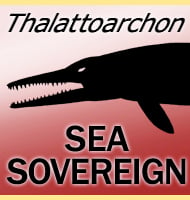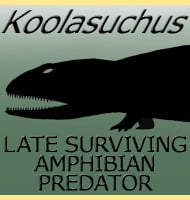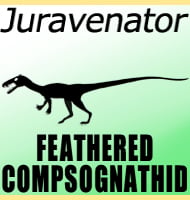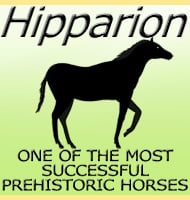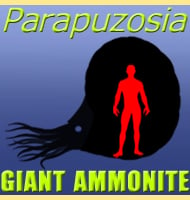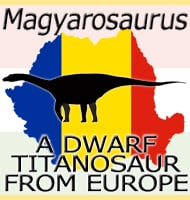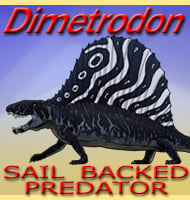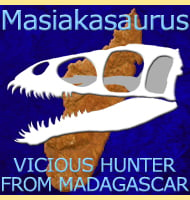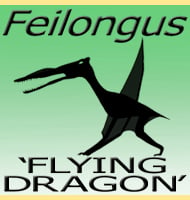In Depth
It is becoming increasingly clear that the dinosaurs were not the only large reptiles that were around in the Mesozoic, and the discovery of the partial skull of Aegisuchus is a further example of this. Although incomplete, the partial remains are from a huge skull, but at the time of writing it is not known exactly what form this skull took. Because of this, Aegisuchus has been envisioned as both a more standard crocodyloform, and a gharial-like crocodile with a longer, slender snout.
This also leads to a lot of speculation about just how big Aegisuchus was. If like a standard crocodile, it may have been between sixteen and twenty-two metres long, if gharial-like, then fifteen to twenty-one metres long. Unfortunately the only way we could be certain to the size of Aegisuchus is if elements of the post cranial skeleton were found, the more complete the better. Unfortunately again the odds are stacked against this happening as the more solid parts of crocodiles such as the skull, teeth and scutes (bony armour) are usually all that remain (though exceptions are known). If the estimates of Aegisuchus are correct however, then it will certainly have been one of the largest crocodiles of all time, and a serious contender for the largest crocodile ever. For more ideas upon how big prehistoric crocodiles could get, check out the table below.
Aegisuchus was chosen as the name of the genus because of the presence of a bony boss of bone that was on top of the skull. This is similar to designs of the Aegis shield from Ancient Greece which was a circular shield with a smaller boss (like half a sphere) in the centre. The boss on these ancient shields was often stylised into the head of the Medusa and were often seen carried by Ancient Greek gods such as Zeus, Apollo and Athena, though often it would be a breastplate instead of a shield.
The actual skull of Aegisuchus is believed to have been flat with eyes that pointed up instead of forward. If correct then Aegisuchus may have lain just below the surface of the water, while the surface glare masked its approach from any animals that may have been drinking on the shore. This would allow Aegisuchus to close in unseen until the moment it struck. Alternatively, Aegisuchus may have lain at the bottom of water systems and ambushed creatures like fish or swimming dinosaurs from below.
We do not yet know for certain what kind of animals Aegisuchus showed a preference towards hunting, if any. Future discoveries of teeth, maxilla’s and mandibles may help to determine this but these of course need to be made. Dinosaurs were certainly a viable option as many different kinds are known from the Kem Kem Beds of Morocco. If however Aegisuchus were a fish hunting species, then the large size might denote a preference for preying upon larger fish genera such as the giant sawfish Onchopristis which is also known from the Cenomanian of Morocco.
Further Reading
- A New Eusuchian Crocodyliform with Novel Cranial Integument and Its Significance for the Origin and Evolution of Crocodylia, Casey M. Holliday & Nicholas M. Gardner - 2012.

